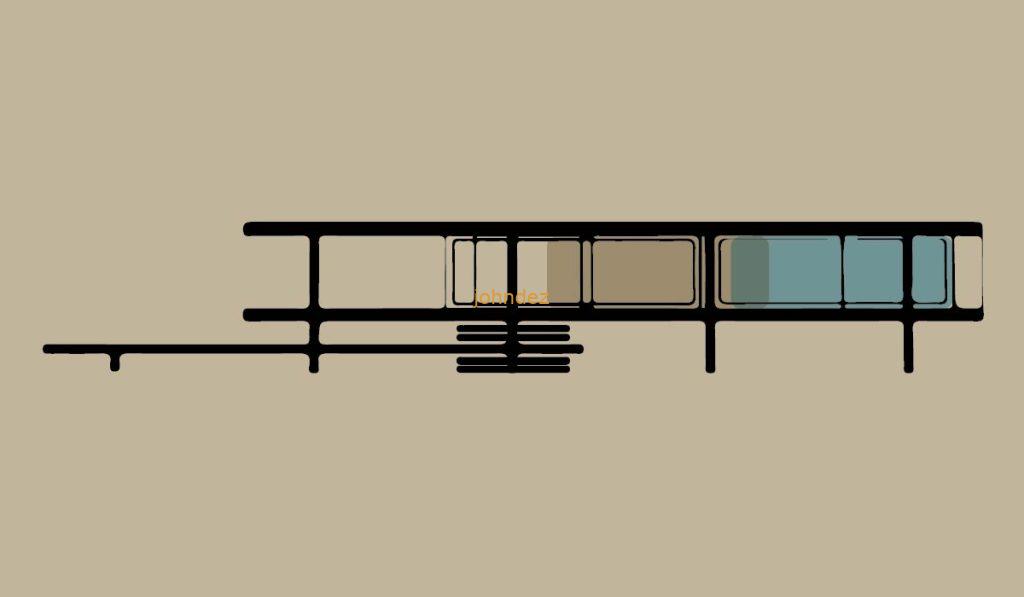Bauhaus significantly impacted modern art and architecture, evident in the minimalist and functional design of buildings and artworks. It gave rise to the International Style in architecture, characterized by simplicity and a focus on volume over mass. The Bauhaus Building in Dessau is a testament to this architectural philosophy.
Transforming Modern Art
The Bauhaus School played a pivotal role in shaping modern art. It challenged the traditional boundaries and definitions of art, integrating crafts and industrial design with fine art. Artists associated with the Bauhaus, like Wassily Kandinsky, Paul Klee, and Josef Albers, pushed the limits of artistic expression. They experimented with abstract forms, color theory, and geometric patterns, influencing a generation of artists and leading to the development of new art movements, such as Abstract Expressionism and Op Art.
A New Architectural Language
In architecture, the Bauhaus movement was instrumental in developing what would later be known as the International Style. This style was characterized by its emphasis on volume over mass, the use of lightweight materials, and a minimalistic aesthetic that eschewed unnecessary ornamentation. Bauhaus architects like Walter Gropius and Ludwig Mies van der Rohe championed buildings designed with functional simplicity, clean lines, and rational use of space.
Iconic Bauhaus Buildings
The Bauhaus Building in Dessau, designed by Walter Gropius, is a prime example of the school’s architectural philosophy. Its design is a manifestation of functionalism, with a clear, geometric form, an open floor plan, and glass curtain walls that symbolize transparency and openness. Similarly, the Fagus Factory, also designed by Gropius, demonstrates the functional and aesthetic principles of Bauhaus architecture, with its use of glass and steel and emphasis on light and space.
Influence Beyond Germany
The influence of the Bauhaus on architecture and urban planning extended well beyond Germany’s borders. Its principles were adopted and adapted around the world, profoundly influencing the development of modernist architecture. Notable examples include the Seagram Building in New York by Mies van der Rohe and the UNESCO Headquarters in Paris by Marcel Breuer, a Bauhaus alumnus.
Enduring Legacy in Contemporary Design
Today, the Bauhaus influence is still evident in contemporary architecture and design. Its principles of functionality, simplicity, and the integration of technology continue to inspire architects and designers. The Bauhaus legacy is visible in the sleek, minimalist designs of modern buildings, the functionalist approach to urban planning, and the ongoing exploration of new materials and technologies in architecture.
The Bauhaus School’s impact on art and architecture has been profound and lasting. It not only reshaped the aesthetic and functional aspects of these fields but also left an indelible mark on the way we think about and interact with our built and visual environments. The Bauhaus principles of simplicity, functionality, and harmony between form and function continue to resonate in the modern world.
Dive Deeper…
Exploring the Legacy of the Bauhaus School of Design
Bauhaus Design Philosophy: Bridging Function and Aesthetics
Key Figures of the Bauhaus: Pioneers of Modern Design
The Bauhaus and Its Revolutionary Impact on Industrial Design
The Bauhaus Influence in Art and Architecture: A Legacy of Minimalism and Functionality
Bauhaus Legacy and Modern Interpretations: Timeless Influence in Design
The Timeless Chairs of the Bauhaus Movement and Beyond
Whimsical Chronicles of Gin & Brain... Who knew less could be more before the Bauhaus taught us to count? They stripped down the frills till buildings and paintings were on a diet. What’s the skinny, Gin?" "Lean and mean, Brain! If your house isn't dressed in Bauhaus 'less', it's probably saying 'more' about your love for clutter. Mrs. Cunk suggests decluttering till your echo sounds chic.
